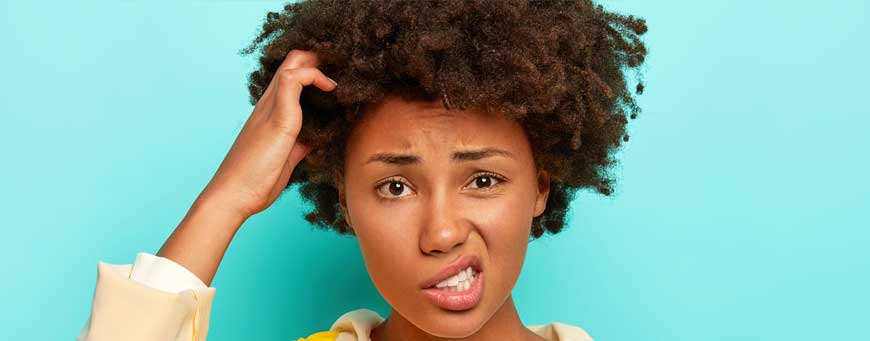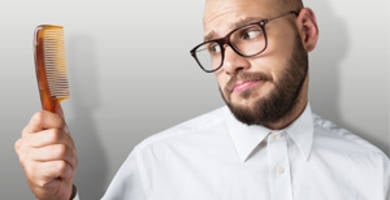Head lice and pediculosis capitis: all you need to know
By Prof. Dr. Soner Tatlidede 2021-09-15

Head lice and pediculosis capitis are a common problem that mainly affects children; head lice infestation in children at school is quite common, and their annoying itching is transmitted between classmates, and from children to their families. Although head lice are not a serious disease, they can be very annoying if not treated in time... and finding the right treatment for lice is not always an easy task.
At Clinicana we are well known for the quality of our treatments, and the affordable cost of a hair transplant; but our clinic is specialised in all treatments for hair problems. That is why we want to address several questions in this article: What are lice? Is pediculosis contagious? Let’s learn how to get rid of head lice and, additionally, some interesting things that you probably didn’t know about these parasites.
What are lice?
Lice (singular: louse) are very small parasitic insects – from 0.5 to 5mm in length, depending on species – that feed by sucking blood, and that are capable of infesting any warm-blooded animal species (both birds and mammals). So then, what is the meaning of pediculosis? It is nothing more than the name that we use to refer to infestation by lice. These parasites can appear anywhere on the body, and even in the pubic area; but body lice are different species from head lice.
Although they can live in other body areas, when we talk about lice we usually refer to pediculosis capitis, which is the infestation by head lice in humans. The pediculosis parasite goes through 3 stages throughout its life: egg (lice eggs are called nits), nymph (new born and young lice) and adult. They suck the blood secreting a substance to prevent it from coagulating, and this is what causes itching: they cannot live more than a few days without feeding, or otherwise they would die.
How do you get lice in hair?
The way to get these insects is mainly through direct contact, either putting in contact our hair with an infected person’s hair, or through objects infected with lice, that is:
- By using combs, hair accessories or towels of a person with lice.
- By sharing clothes used a few days ago by an infested person (hats, hair bands, coats, scarves, T-shirts, etc).
- By coming into contact with any other object that has been in contact with a person with lice: mattresses, blankets, pillows, fluffy toys, rugs, cushions...
It is important to underline again that lice are spread by contact: not because of being close to a person with lice, we are going to get them; furthermore, any object or clothing can only transmit lice within a few days; since in 2, maximum 4 days (depending on environmental conditions) lice will die of starvation if not in contact with a human body. For contagion, it is also necessary that lice are in the nymph or adult stage: if the infected object has only nits (eggs), contagion is not possible.
10 interesting things you probably didn’t know about lice
There are many things that most of the public do not know about lice. Let's see some curiosities about these parasites:
1. Head lice in adults are uncommon:
Pediculosis capitis in children is the most common, since infestations normally occur between 3 and 10 years of age; on the contrary, cases of head lice in adults are rare: this is because from the age of 10, the production of sebum in hair increases... and lice simply hate it.
2. They like nape and ears:
These parasites have a special preference for the neck - where hair density and temperature are usually higher - and behind the ears, where they lay their eggs (nits).
3. Clean heads are their favourites:
Although the common belief suggests that lice "attack" heads with poor hygiene, the truth is that it is just the opposite: they prefer clean hair, since in this way they can better locate veins to suck blood. Also, they prefer straight hair better than curly hair.
4. 10 head lice eggs a day:
The life of these insects is actually very short: they barely live a month, and during that time they only mate once; but that is enough for them: after copulation, the female stores the male's sperm, and doses it to put eggs (up to 10 a day) during the rest of its (short) life.
5. No way... Lice cannot jump:
Although there are those who still believe otherwise, lice neither jump, nor fly. They are only transmitted by contact, to the point that passion for selfies in our modern society has increased lice contagion (because we put our heads together to appear in the photo). But they can walk, and very fast: 30 cm per minute.
6. Dinosaurs were the first to suffer from lice:
Did you know? The ancient lords of the Earth already endured itching by lice millions of years ago, just like birds - their descendants - do today. In fact, the evolution of their hosts can be reconstructed through lice: thanks to them, we know for example that humans already wore clothes 170,000 years ago.
7. Humans’ lice are different:
The so-called Pediculus humanus capitis (human head louse) lives only in human beings, while animals are parasitised by other types of lice, which could not survive in human body (and vice versa). That’s why anti-lice products for humans do not work on animals.
8. Vinegar doesn't kill them... Dye does:
Although it is a very widespread belief, vinegar does not kill lice and does not help as prevention against pediculosis capitis... although it certainly does help to remove nits; on the contrary, when we dye hair, hair dyes can kill them if they contain ammonia - something more and more rare - but, unfortunately, they do not kill nits.
9. They can live several days out of head:
Depending on the environmental conditions, lice can live between a few hours and a few days (no more than 3 or 4) outside head, on objects such as clothing, combs or pillows; therefore, these objects must be disinfected if they have been in contact with an infested person.
10. There are more than 3.000 lice species:
It is estimated that there are 3,250 species of lice, many of them so specific that they only parasitise one species, and have evolved with it through millions of years. Lice come in all sizes, and in a wide variety of colours (even transparent)... they even differ in the way they feed (some species feed by sucking, others by chewing).
What is the best head lice treatment?
It is important to emphasise that any head lice treatment must be previously consulted with a doctor, even if we are going to resort to home remedies, something not always advisable. Usually, lice treatment combines some sort of drug - such as dimethicone - with the use of special combs to remove nits, and a head lice shampoo, although there are cases in which these parasites have become resistant to these shampoos.
It is crucial, in addition to treating the person infested with lice, to wash with hot water all clothes (including towels, bedding, hats...) that have been in contact with the infested person days before detecting the presence of lice; if there is an item that cannot be washed, it is enough to isolate it for 1-2 weeks to make sure that parasites are dead.
Remember that, although head lice and pediculosis capitis are not a serious health problem, it is important to detect them in time to apply the right treatment. If you want more information, or if you need any hair treatment, do not hesitate to contact Clinicana: we are the best hair transplant clinic in Turkey, and we use the most modern techniques. Request a free consultation, and ask us for a free, no obligation estimate.








